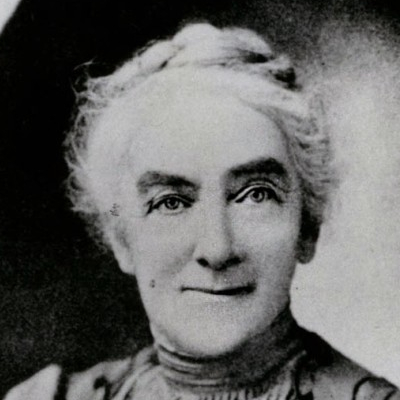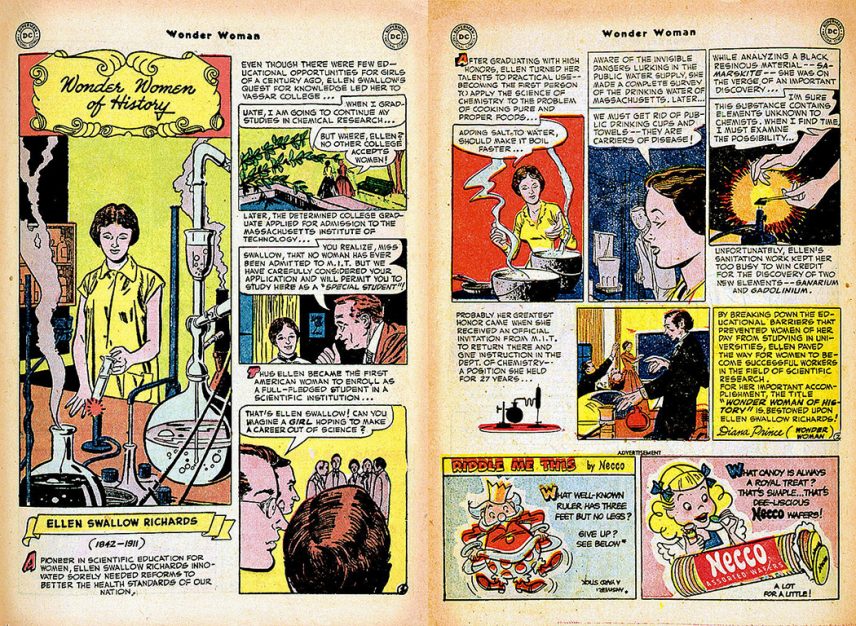AAUW Co-Founder Ellen Swallow Richards
Calling on Future Generations
To whom shall we look more confidently for leadership in constructive work, for social and national betterment, than to the professionally and technically trained women now coming onto the stage?

Ahead of Her Time
Ellen Swallow Richards co-founded AAUW when she was nearly 40 years old, along with Marion Talbot who was a generation younger. At a time when women were largely barred from higher education, Richards earned a chemistry degree, worked on clean water treatment and pollution, and even founded the first home economics and school lunch programs.
Richards was born December 3, 1842, in Dunstable, Massachusetts, to parents who valued education for both girls and boys. Between tutoring and housecleaning jobs, she saved the $300 she needed for tuition and enrolled at Vassar College in 1868, where she earned her bachelor’s degree in just two years — becoming the first U.S. woman to be awarded a degree in chemistry.
Desiring to continue her studies, she applied to the Massachusetts Institute of Technology. The administration admitted her, but only as a “special student,” making it known that her admission would in no way serve as a precedent for other women to attend. According to the Vassar Encyclopedia, “Her entrance to MIT was not easy; many institutions turned her down on the basis of her sex, and MIT declined all women applicants except for Richards, accepting her as a special student to ascertain women’s ability in the sciences.”
Richards completed the requirements for a master’s degree but MIT refused to grant it to her, so Vassar awarded it instead. She then completed all of the requirements for her doctorate but never received the degree. Despite these obstacles, Richards stayed connected with MIT. In 1876, with the help of the Women’s Educational Association of Boston, she established the Woman’s Laboratory at MIT and worked as an assistant instructor (without pay). Through the Woman’s Laboratory, she fulfilled her dream of encouraging other women to study science and provided an entry point for their training. At the lab, women were taught chemistry, biology and mineralogy—Marion Talbot was one of Richards’ students. In 1951, Richards’ accomplishments were even featured in the Wonder Women of History comic series.

From 1884 to 1911, Richards taught at the Massachusetts State Board of Health’s Lawrence Experiment Station, where she conducted studies on water quality. She researched causes of water pollution, and her work resulted in the establishment of the first modern sewage treatment plant.
Richards is also credited with creating the field of home economics, and she wrote many books and manuals on the topic. With her colleagues, she organized a series of conferences at Lake Placid, New York, which resulted in the formation of the American Home Economics Association in 1909 with Richards as its first president. She was also behind the nation’s first school lunch program, started in Boston in 1894.
Richards remained active with AAUW until her death in 1911. At the 25th anniversary meeting in 1907 she was still going strong, speaking on “Desirable Tendencies in Professional and Technical Education for Women.” In that speech she reflected on the progress that had been made in the previous 25 years, nothing that “into the newer lines of investigation of pure and applied science, women were going in rapidly increasing numbers.” She continued, “To whom shall we look more confidently for leadership in constructive work, for social and national betterment, than to the professionally and technically trained women now coming onto the stage?”
Related
AAUW’s story begins in 1881, when a small group of female college graduates banded together to open the doors for women’s career advancement and to encourage more women to pursue higher education.
